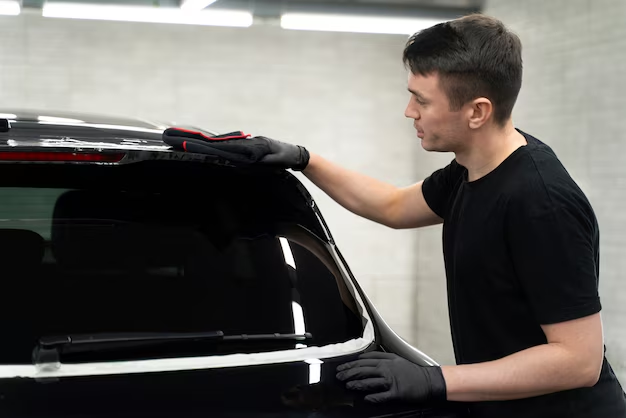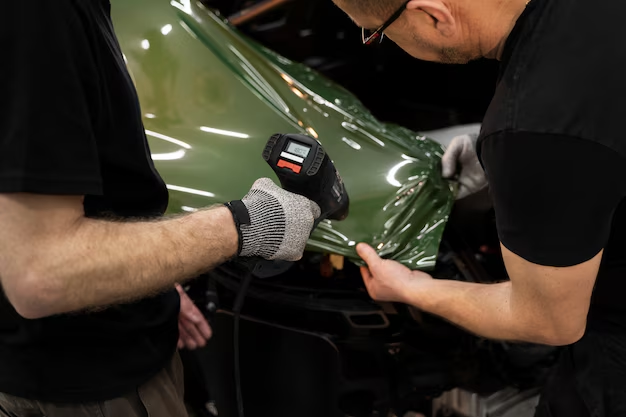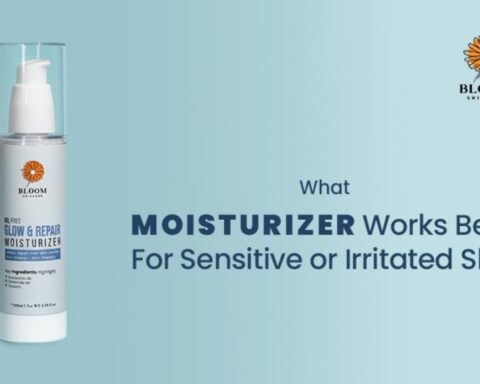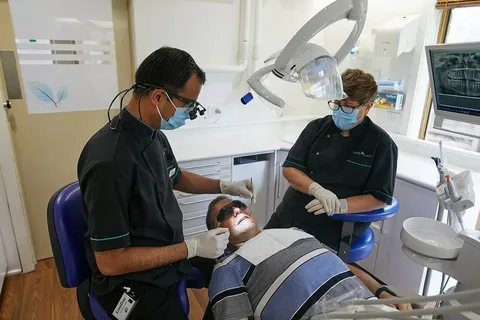When it comes to upgrading a vehicle, many car owners think of exterior styling or performance enhancements first. However, window tinting is one of the most practical upgrades you can make in 2025. Among all tinting options available, ceramic car tint film stands out as the premium choice for drivers who want style, comfort, and protection combined.
Unlike traditional dyed or metallic films, ceramic tints use advanced nanotechnology to block heat, reduce UV exposure, and improve driving safety—all without compromising visibility.
What Is Ceramic Car Tint Film?
Ceramic tint is made using nano-ceramic particles embedded into the film. These particles are non-conductive, meaning they don’t interfere with electronic devices like GPS, mobile phones, or radio signals. The result is a durable, high-performance tint that offers superior heat rejection compared to standard tinting films.
Ceramic films don’t just darken your windows for privacy—they actively improve the driving experience by keeping interiors cool and protecting against harmful rays.
Why Choose Ceramic Tint Over Regular Tint?
1. Superior Heat Rejection
Ceramic films block up to 80–90% of infrared rays, which are responsible for heat buildup inside your vehicle.
2. UV Protection
Blocks more than 99% of harmful UV rays that can cause skin damage and fade your car’s interior.
3. Signal Clarity
Unlike metallic tints, ceramic tints do not interfere with GPS, Bluetooth, or mobile signals.
4. Enhanced Durability
Ceramic films resist fading, bubbling, and discoloration, making them a long-term investment.
5. Better Visibility
Ceramic tints provide clear visibility both day and night, unlike darker dyed films that can reduce night driving safety.
Benefits of Ceramic Car Tint Film
- Comfort – Keeps your car cool during hot summers, reducing reliance on air conditioning and saving fuel.
- Aesthetics – Adds a sleek, modern look to your vehicle without being overly reflective.
- Interior Protection – Prevents cracking, fading, and deterioration of dashboards, seats, and upholstery.
- Safety – Adds shatter resistance to windows, reducing the risk of injury during accidents.
- Eco-Friendly – By lowering AC usage, ceramic tint contributes to reduced fuel consumption and emissions.
How Ceramic Tint Compares to Other Types
| Tint Type | Heat Rejection | UV Protection | Signal Interference | Durability | Cost |
| Dyed Film | Low | Moderate | None | Low | Affordable |
| Metallic Film | Moderate | Good | Yes (interference) | Medium | Moderate |
| Carbon Film | Good | Good | None | Medium | Moderate |
| Ceramic Film | Excellent | Excellent | None | High | Premium |
Ceramic tint is clearly the superior option for drivers who value performance and comfort.
Installation: DIY vs. Professional
- DIY Installation: Pre-cut kits are available, but applying ceramic tint requires skill, patience, and a dust-free environment.
- Professional Installation: Ensures precise fitting, no bubbles, and often comes with a warranty for added peace of mind.
Given the cost of ceramic tint, most car owners prefer professional installation to maximize results.
Legal Considerations
Before installing ceramic car tint film, check your local tinting laws. Regulations vary by region, with limits on how dark your tint can be. Some areas allow lighter ceramic tints that still offer heat and UV rejection without reducing visibility.
Caring for Ceramic Tint
To keep your ceramic tint in excellent condition:
- Wait Before Cleaning – Allow 7–10 days after installation before washing windows.
- Use Mild Cleaners – Avoid ammonia-based products that may damage the film.
- Soft Cloths Only – Use microfiber cloths for streak-free cleaning.
- Avoid Sharp Objects – Be cautious when placing items near tinted windows to prevent scratches.
With proper care, ceramic tints can last over a decade.
The Growing Popularity of Ceramic Tint in 2025
Drivers are becoming more conscious of comfort, safety, and energy efficiency. As a result, ceramic tint is no longer seen as a luxury but as a smart, long-term investment. Many manufacturers are even offering ceramic tint as part of their premium vehicle packages, highlighting its importance in modern car ownership.
Final Thoughts
The ceramic car tint film is more than just a stylish addition—it’s a functional upgrade that enhances comfort, safety, and longevity of your vehicle. By blocking heat, UV rays, and glare while maintaining clear visibility, ceramic tint offers unmatched performance compared to traditional tint films.
If you want a premium solution that delivers year-round comfort and protection, ceramic tint is the ultimate choice for 2025 and beyond.
FAQs
Q1: Does ceramic tint really make a difference?
Yes. Ceramic tint offers up to 90% heat rejection and superior UV protection compared to standard tints.
Q2: How long does ceramic tint last?
With proper care, ceramic tint can last 10+ years.
Q3: Is ceramic tint worth the higher cost?
Absolutely. Its durability, performance, and protection justify the premium price.
Q4: Will ceramic tint interfere with my GPS or phone?
No. Ceramic tint is non-metallic and does not affect signals.
Q5: Can I get ceramic tint in lighter shades?
Yes. Ceramic tints are available in a range of shades, from nearly clear to dark, while still providing full heat and UV protection.








